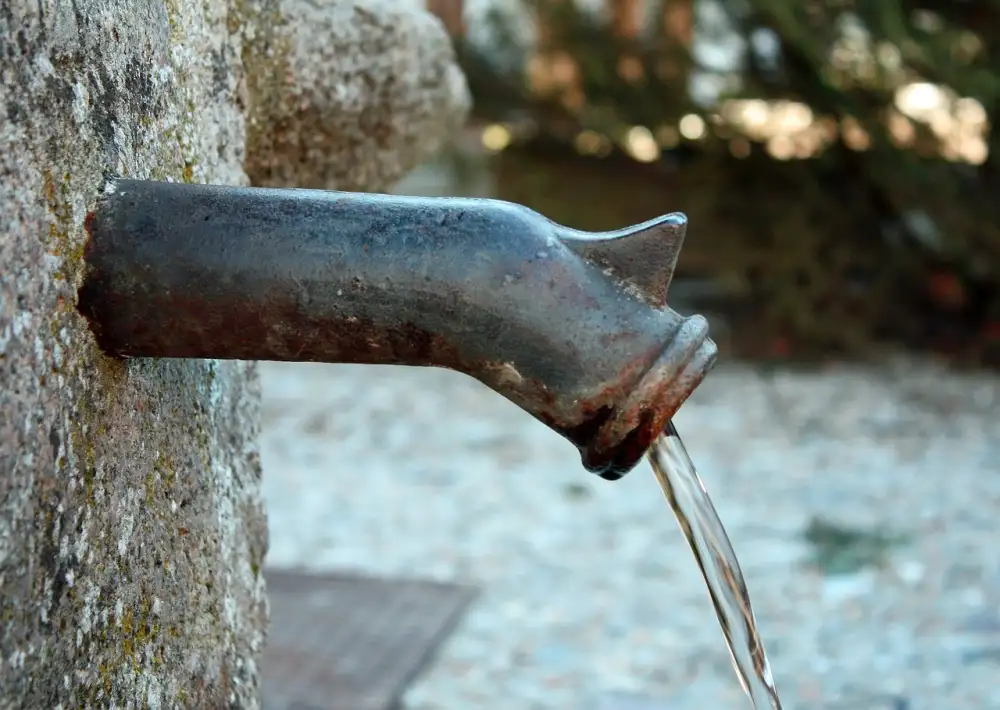Revive Your Rusty Cast Iron: Master the Art of Cleaning and Restoring

Cast iron cookware is a beloved kitchen staple, known for its ability to retain heat and create delicious meals. However, over time, these sturdy pans can develop rust, which not only affects their appearance but also their performance. But fear not! With the right techniques and a little effort, you can easily revive your rusty cast iron and bring it back to its former glory. In this article, we will guide you through the process of cleaning and restoring your cast iron, ensuring that it remains a cherished part of your culinary journey. So let's roll up our sleeves and get ready to tackle those rusty pans!
Gather necessary materials for cleaning
To effectively clean and restore rusty cast iron, it is important to gather the necessary materials. Here are the items you will need:
1. Protective gloves: These will protect your hands from any chemicals or sharp edges while cleaning.
2. Steel wool or a wire brush: Use these tools to remove the rust from the surface of the cast iron.
3. Dish soap: Choose a mild dish soap that is gentle on the cast iron but effective in removing grease and grime.
4. White vinegar: This acidic solution helps break down rust and remove stubborn stains.
5. Baking soda: A natural abrasive, baking soda can be used to scrub away any remaining rust particles.
6. Paper towels or clean cloth: These will be used for drying the cast iron after cleaning.
7. Cooking oil or seasoning wax: To prevent future rusting, you will need a suitable oil or wax for seasoning the cast iron.
By gathering these materials beforehand, you'll be well-prepared to tackle the task of cleaning and restoring your rusty cast iron cookware.
Preparing the cast iron for cleaning
Before you begin the process of cleaning your rusty cast iron, it is important to properly prepare it. Start by removing any loose rust or dirt using a stiff brush or steel wool. This will help to create a clean surface for the cleaning process. Next, rinse the cast iron with warm water and mild dish soap to remove any remaining debris. Be sure to thoroughly dry the cast iron before moving on to the next step. Preparing the cast iron for cleaning is essential in ensuring that the restoration process is effective and successful.
Removing rust from the cast iron
To remove rust from your cast iron, there are several methods you can try. One popular method is to use a mixture of equal parts white vinegar and water. Simply soak the rusty areas in this solution for a few hours or overnight. Then, scrub the rust away using a stiff brush or steel wool.
Another effective method is to create a paste using baking soda and water. Apply the paste to the rusted areas and let it sit for about an hour. Then, scrub the paste off with a brush or sponge.
If the rust is stubborn and doesn't come off with these methods, you can also try using a commercial rust remover specifically designed for cast iron. Follow the instructions on the product carefully and ensure that you rinse and dry the cast iron thoroughly after using any chemical cleaners.
Remember to wear gloves and work in a well-ventilated area when using chemical cleaners. Additionally, always test any cleaning method on a small, inconspicuous area of your cast iron before applying it to the entire surface.
By removing rust from your cast iron, you will not only restore its beauty but also ensure that it functions properly for years to come.
Scrubbing and cleaning the cast iron
Once you have removed the rust from your cast iron, it's time to give it a good scrubbing. Start by rinsing the cast iron under warm water to remove any loose debris. Then, using a stiff brush or sponge, scrub the surface of the cast iron with a mixture of mild dish soap and warm water. Be sure to scrub all areas, including the inside and outside of the pan or skillet.
Pay special attention to any remaining rust spots and stubborn stains. You can use a paste made from equal parts baking soda and water to gently scrub these areas. The abrasive nature of baking soda helps to lift away tough stains without damaging the cast iron.
For hard-to-reach areas or intricate designs on your cast iron, consider using a toothbrush or small cleaning brush to ensure every nook and cranny is cleaned thoroughly.
After scrubbing, rinse the cast iron again under warm water to remove any soap residue. Make sure you rinse it well so that no soap is left behind.
Remember, never soak your cast iron in water for an extended period as this can lead to rust formation. Instead, clean it promptly after each use and dry it thoroughly.
In the next section, we will discuss how to properly dry and season your newly cleaned cast iron for optimal performance and longevity.
Drying and seasoning the cast iron
Drying and seasoning the cast iron is a crucial step to ensure its longevity and prevent future rusting. After cleaning, thoroughly dry the cast iron using a clean towel or by placing it over low heat on the stove for a few minutes. Make sure all moisture is removed to avoid any chance of rust formation.
Once dry, it's time to season the cast iron. Seasoning creates a protective layer on the surface that prevents rust and enhances its non-stick properties. To season, apply a thin layer of vegetable oil or shortening all over the cast iron, including the handle and exterior. Use a paper towel to remove any excess oil.
Next, place the cast iron upside down in an oven preheated to 350°F (175°C). Put aluminum foil on the bottom rack to catch any drips. Leave it in the oven for about one hour. This process allows the oil to polymerize, forming a durable coating.
After an hour, turn off the oven but leave the cast iron inside until it cools down completely. This slow cooling helps in further strengthening and bonding of the seasoning layer.
Repeat this seasoning process several times until you achieve a smooth, black patina on your cast iron. Each round of seasoning adds more protection and improves its performance.
Remember that proper maintenance is essential for preserving your seasoned cast iron. Avoid using soap while cleaning as it can strip away the seasoning layer. Instead, use hot water and a stiff brush or sponge to remove food particles. Dry thoroughly after each use and apply a light coat of oil before storing.
By following these steps, you can revive your rusty cast iron and master the art of cleaning and restoring it to its former glory!
Proper maintenance and prevention of rust
Proper maintenance is crucial to prevent rust from reoccurring on your cast iron. After each use, make sure to clean and dry the pan thoroughly. Avoid using harsh detergents or abrasive scrubbers that can strip away the seasoning layer. Instead, opt for a gentle brush or sponge and hot water.
Once cleaned, it's important to season the cast iron to create a protective barrier against moisture. Apply a thin layer of oil or shortening to the entire surface of the pan, including the handle. Place it upside down in an oven preheated to 350°F (175°C) for about an hour. This will allow the oil to penetrate and bond with the metal, forming a natural non-stick coating.
To further prevent rust, store your cast iron in a dry place with good ventilation. Avoid stacking multiple pans together as this can trap moisture between them. If you notice any signs of rust starting to develop, address it immediately by following the steps outlined earlier.
By practicing proper maintenance and prevention techniques, you can ensure that your cast iron remains rust-free and ready for many delicious meals to come.
In conclusion, cleaning and restoring rusty cast iron can bring new life to your cookware and enhance your culinary experience. By following these steps, you can revive your rusty cast iron and ensure its longevity:
1. Regular maintenance is key: Clean your cast iron after each use by gently scrubbing it with a brush or sponge.
2. Dry thoroughly: Always make sure to dry your cast iron completely after cleaning to prevent moisture from causing rust.
3. Season regularly: Apply a thin layer of oil to the surface of the cast iron after each use to maintain its seasoning and protect against rust.
4. Store properly: Store your cast iron in a dry place with good air circulation to prevent moisture buildup.
5. Avoid harsh detergents: Refrain from using harsh chemicals or abrasive cleaners that can strip away the seasoning and damage the cast iron.
By following these tips, you can keep your cast iron in top condition and enjoy its benefits for years to come. Happy cooking!
Published: 21. 12. 2023
Category: Home



